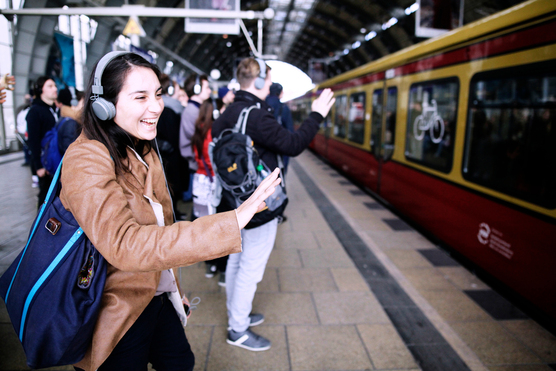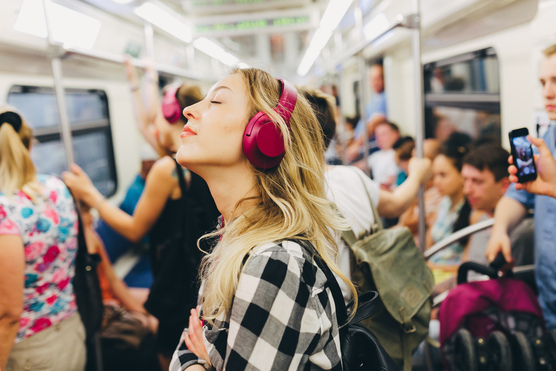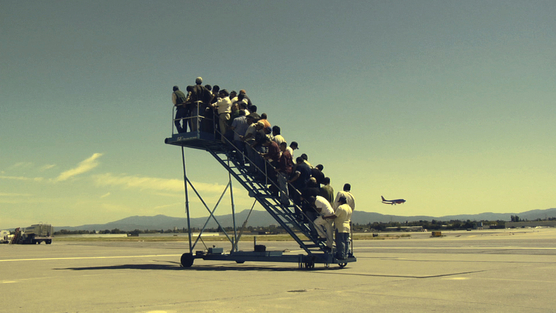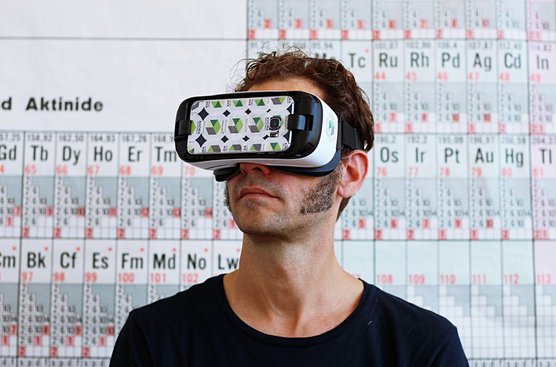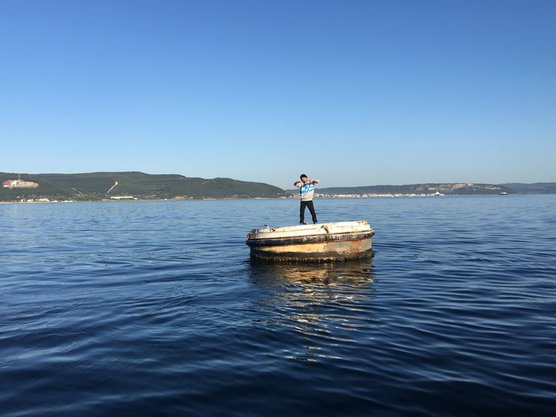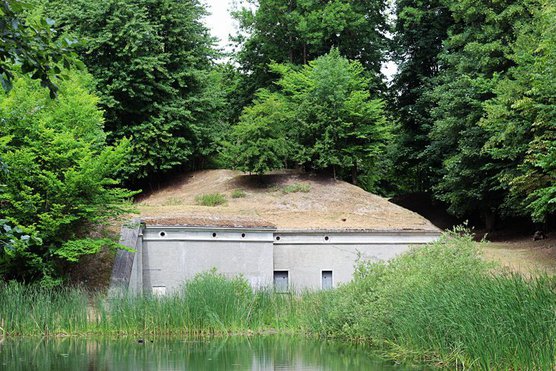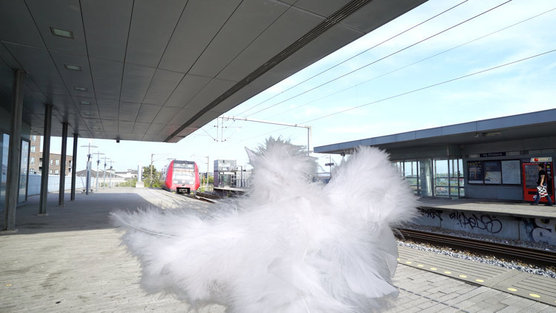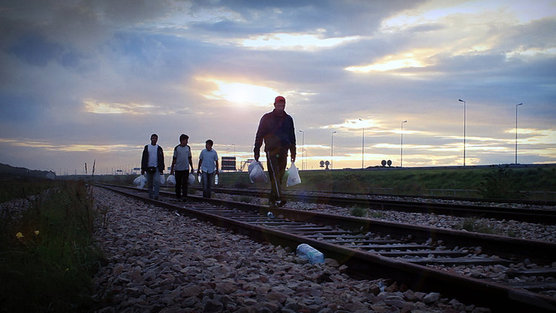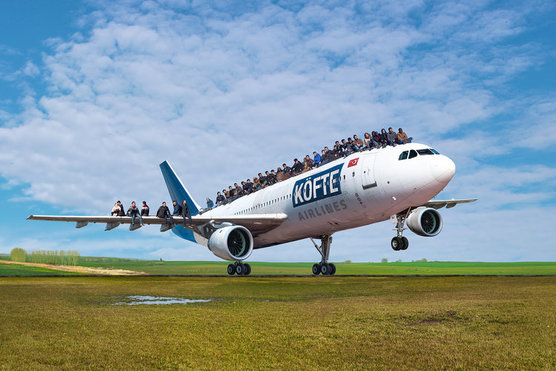
Transit
From 13 September 2018 – 24 March 2019
We travel as never before, but on radically different terms. With the exhibition project TRANSIT, KØS Museum of Art in Public Spaces investigates transit sites – currently among the most controversial and crowded public spaces of contemporary society – and the many different kinds of travellers using them. Experience art at train stations and on the E line, a major international exhibition at KØS, plus public debates and a special edition of the newspaper Information. See more at www.itransit.dk.
Train platforms and stations and bus terminals and airports are all central traffic hubs where the paths of crowds of travellers cross every day: commuters travelling to and from work, tourists on holiday, migrants and refugees who have had to move temporarily or permanently to a new country or are in transit between two countries. We travel on radically different terms and for very different practical, social, political or cultural reasons.
With TRANSIT KØS investigates and brings contemporary art and artists into public transit zones that are so often sites of conflict and negotiation. Which travellers have the right to be where? How to we react to other travellers? What kind of travellers are we?
Art on Multiple Platforms
TRANSIT is about states of transit, and includes art that has been made in transit, as well as works that can be experienced in transit. The exhibition unfolds on multiple platforms. At Copenhagen Central Station, Køge Station, and on the E line travellers will be able to experience art on the move, just as KØS Education is moving out of the museum and onto platforms and trains. At the museum itself visitors will be able to explore an exhibition of works by Danish and international artists, all of which zoom in on personal stories of being in transit. The TRANSIT project also includes a debate and newspaper partnership with Information, a richly illustrated publication, and the website www.itransit.dk where you can download teaching materials, find information about the art projects, and learn more about the process behind them.
Art at Train Stations and on the E Line
Caught up in crowds of people on the move, commuters, passenger and passers-by will come across the Swedish artist Runo Lagomarsino’s performance project Every day people follow signs pointing to some place which is not their home. A passenger gets on the E line heading for Køge and starts reading a newspaper in either Polish, Urdu, Serbo-Croatian, Arabic or Turkish – the five languages alongside Danish most people speak in the area the E line passes through. At the end station the passenger heads for KØS, where they read an article aloud for visitors to the museum.
At Copenhagen Central Station and KØS passers-by are invited inside author and sound artist Pejk Malinovski’s virtual reality installation This Room. Based on the real-life stories of refugees and the audio-visual immersion of virtual reality, participants are given a bodily experience of the stress, fear and insecurity many refugees live through in transit.
SUPERFLEX have created the video work Western Rampart for the new bridge at Køge Station. Based on the history of Denmark’s Western Rampart, the work addresses current debates on global borders. And the multimedia collective Rimini Protokoll invite people to join their audio walk Remote Copenhagen on the E line from Sjælør Station to Copenhagen Central Station. Wearing headphones, participants hear a GPS voice telling them to get on the train where they are bombarded with instructions, impressions, and stories about the transit sites they pass through.
The Crossing Paths of Tourists and Refugees
Throughout the entire run of the exhibition visitors to KØS can see powerful video works and installations created by Danish and international artists. Halil Altindere’s video work Homeland, for example, zooms in on the intersecting and radically different paths of tourists and refugees, whereas Nikolaj Bendix Skyum Larsen’s video work Promised Land follows the migration of a group of young men using their own handheld footage.
The Platform Classroom
TRANSIT is launching an extensive, nationwide educational programme to engage children and young people in issues of migration, the refugee crisis, and states of transit. During TRANSIT there will be educational activities on platforms and trains and extended workshops run by artists Tina Enghoff and Kent Klich, as well as a collectively developed project space for debates in collaboration with the Danish Refugee Council Youth. KØS Education has developed a toolkit for students to write train poems, observe passengers, and sketch states of transit. The toolkit and other teaching materials can be downloaded at www.itransit.dk.
www.itransit.dk
As well as a wide range of teaching materials, www.itransit.dk is also a platform where you can explore the many art projects included in the exhibition, encounter the different artists and issues at stake, and see how the art projects have been created. This is also where you can keep up to date with our public debate programme, watch videos, and listen to podcasts. At www.itransit.dk you can also find information about the schedule and tickets for TRANSIT’s performances and audio walks.
Special Edition Newspaper on Transit
In partnership with the Danish daily newspaper Information, on November 17th TRANSIT is publishing a special edition of the newspaper’s weekend supplement with essays, reports, diary accounts, and interviews written by journalists and researchers, as well as commuters, tourists, migrants and refugees. There will be a series of public debates during the exhibition in partnership with the newspaper, and as the exhibition draws to a close KØS is also launching a richly illustrated, research-based publication in both Danish and English.
Participating artists:
Halil Altindere, Sonja Lillebæk Christensen, Tina Enghoff, Kent Klich, Nikolaj Bendix Skyum Larsen, Runo Lagomarsino, Madame Nielsen, Pejk Malinovski, Adrian Paci, Marco Poloni, Rimini Protokoll, Forensic Oceanography and SUPERFLEX.
The TRANSIT research project and exhibition has only been made possible thanks to the generous support of Nordea-fonden.
The project has also been supported by the Knud Højgaard Foundation, the urban development initiative Køge Kyst, and the Danish Arts Foundation.
TRANSIT is based on postdoc research funded by the New Carlsberg Foundation.

